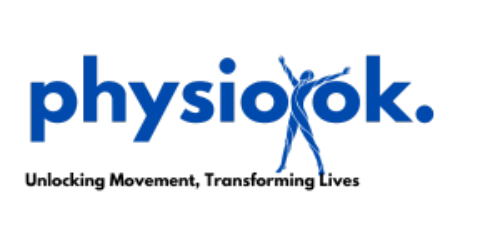Mindfulness is an evidence-based practice that involves focusing on the present moment without judgment, increasing awareness of one's thoughts, emotions, and sensations. In physiotherapy, integrating mindfulness can enhance treatment outcomes by addressing both physical and mental well-being, especially for patients dealing with chronic pain, injury recovery, and stress-related conditions.
Benefits of Mindfulness in Physiotherapy
-
Pain Management
- Mindfulness helps patients develop a new relationship with pain, reducing emotional reactions and promoting relaxation. Studies suggest that mindfulness can reduce perceived pain intensity and improve pain tolerance.
-
Reduced Stress and Anxiety
- Injuries and chronic conditions often bring stress, which can hinder recovery. Mindfulness practices reduce stress by calming the nervous system and decreasing cortisol levels, allowing the body to heal more efficiently.
-
Improved Body Awareness
- Mindful movement enhances proprioception and body awareness, allowing patients to recognize areas of tension, misalignment, or weakness. This can aid in correcting posture and movement patterns, preventing re-injury.
-
Enhanced Motivation and Adherence
- Patients practicing mindfulness may feel more connected to their treatment process, leading to greater motivation and adherence to exercises and therapy sessions.
-
Better Emotional Health
- Chronic pain and rehabilitation can impact mental health. Mindfulness helps patients manage emotions, improving overall mood, which can positively influence recovery.
Mindfulness Techniques in Physiotherapy
-
Body Scanning
- Patients are guided to focus on different body parts, bringing awareness to sensations and releasing tension. This can be integrated before or after exercises to prepare the body or support relaxation post-session.
-
Breath Awareness
- Deep breathing exercises help calm the mind and reduce physical tension. Patients are taught diaphragmatic breathing techniques, focusing on slow, deep breaths, which promotes relaxation and decreases pain perception.
-
Mindful Movement
- In practices like yoga or Tai Chi, patients perform movements slowly and mindfully. Physiotherapists can incorporate elements of these practices, encouraging patients to focus on each movement’s sensation, reducing strain and improving technique.
-
Progressive Muscle Relaxation (PMR)
- PMR involves tensing and relaxing different muscle groups to increase awareness of muscle tension. Physiotherapists can guide patients through PMR to help reduce physical tension associated with pain or stress.
-
Guided Imagery
- Patients visualize positive outcomes or relaxing scenes, which can enhance relaxation, reduce anxiety, and increase the body’s natural healing responses. This is particularly beneficial for patients dealing with chronic pain or pre-surgery anxiety.
-
Mindful Walking or Stretching
- Patients are encouraged to focus on the physical sensations of each step or stretch, helping improve balance, coordination, and movement control. This can be useful in gait training or postural rehabilitation.
How to Integrate Mindfulness into Physiotherapy Sessions
-
Mindful Warm-Ups
- Begin each session with a brief body scan or breath-focused exercise to help patients center themselves, relax, and become present in their treatment.
-
Mindfulness During Exercises
- Encourage patients to focus on breathing and muscle sensations during exercises, promoting proper form and reducing the risk of injury. This practice can also help patients stay engaged and mindful of their body's responses.
-
Mindful Cool-Down
- Use relaxation techniques, such as guided imagery or deep breathing, at the end of each session. This allows patients to reflect on their progress and encourages mental and physical recovery.
-
Encourage a Home Practice
- Physiotherapists can recommend simple mindfulness practices for patients to do at home, such as 5-10 minutes of daily breathing exercises or a brief body scan before sleep. This helps sustain the benefits beyond clinical sessions.
-
Addressing Pain with Mindfulness
- Encourage patients to view pain as a neutral sensation rather than something to fear or avoid. This helps reduce the emotional distress related to pain and fosters a positive mindset during rehabilitation.
The Physiotherapist's Role in Mindful Practice
Physiotherapists play a key role in guiding patients through mindfulness, helping them learn to be present and engage with their bodies. Physiotherapists can:
- Create a Calm Environment: A serene and welcoming setting enhances relaxation, aiding in mindfulness practices.
- Model Mindfulness: Physiotherapists can practice mindfulness themselves, setting an example and helping patients feel more comfortable with these techniques.
- Tailor Mindfulness Techniques: Personalize techniques based on the patient’s needs, comfort level, and experience with mindfulness.
- Provide Continuous Support: Consistent encouragement and support build patient confidence in their mindfulness practice.
Conclusion
Incorporating mindfulness in physiotherapy offers a holistic approach that benefits both mind and body, addressing the emotional and physical aspects of healing. By integrating mindfulness techniques into treatment, physiotherapists can enhance patient engagement, reduce stress, and promote lasting recovery. Whether dealing with chronic pain, injury recovery, or stress, mindfulness can be a transformative addition, empowering patients to take an active role in their well-being and overall health.
